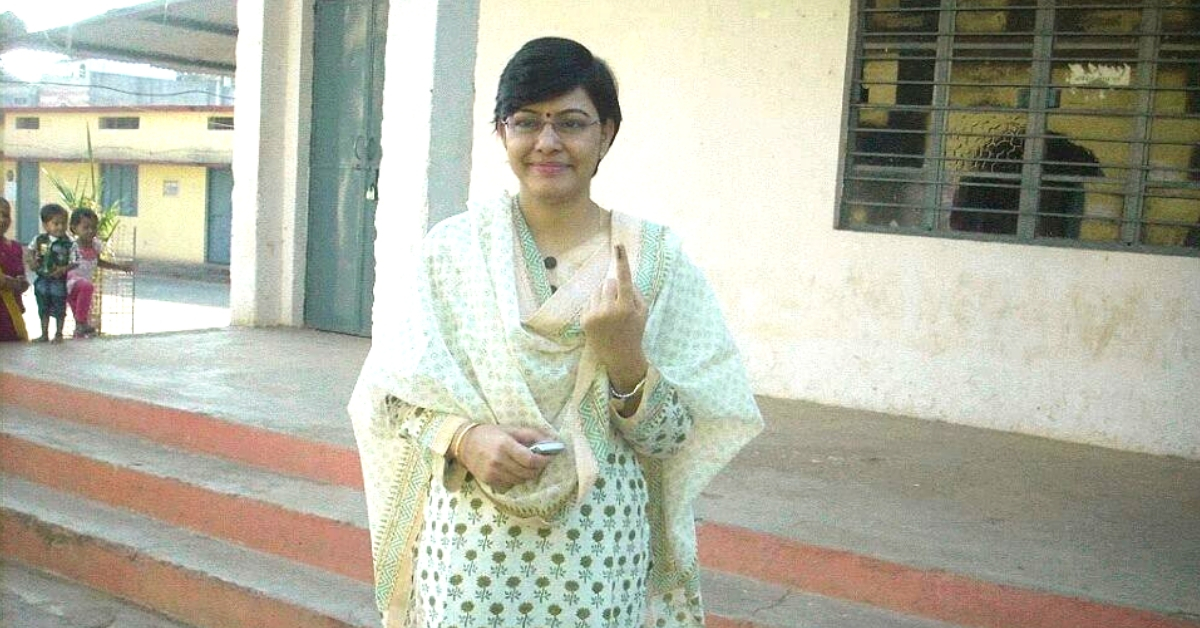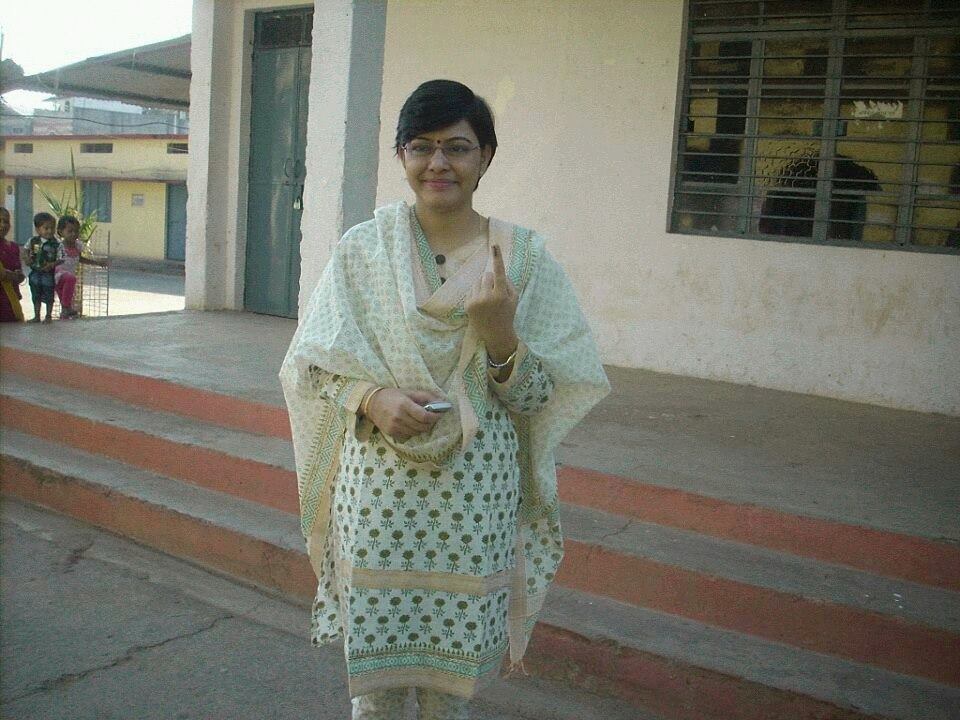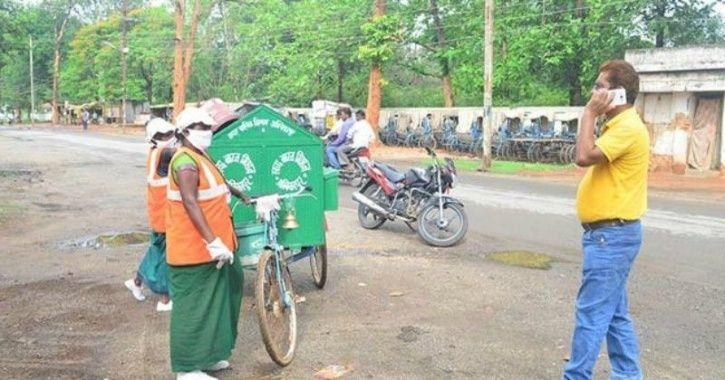Here’s How This IAS officer From Chhattisgarh Created India’s Cleanest Small City
It was something she took up the moment she entered the district capital of Ambikapur—a small city with a population of more than 140,000.

Tomorrow, we celebrate the birthday of Mahatma Gandhi, a man who needs no introduction. Besides leading the charge against the British Empire without resorting to violence and standing on the principle of satyagraha, Gandhi was also one of the leading advocates of sanitation and cleanliness—critical elements in the Gandhian way of life.
While Independent India has seen a plethora of government-sponsored civic cleanliness campaigns, schemes and programmes, the launch of Prime Minister Narendra Modi’s Swachh Bharat Abhiyan on October 2, 2014, and the surrounding publicity blitz took matters to another level.
“A clean India would be the best tribute India could pay to Mahatma Gandhi on his 150th birth anniversary in 2019,” said Prime Minister Modi as he launched the Swachh Bharat Mission in the national capital on October 2, 2014, from the ramparts of the Red Fort.
Nearly eight months earlier, however, Ritu Sain, a 2003-batch IAS officer embarked on a cleanliness mission of her own as the Collector of the Surguja District in Chhattisgarh.

It was something she took up the moment she entered the district capital of Ambikapur—a small city with a population of more than 140,000. Speaking to Hindustan Times, she describes how on reaching Ambikapur there was an unbearable stench, with an open garbage dump situated right opposite a massive ‘Welcome to Ambikapur’ billboard.
This was not the impression she wanted people to have of the city under her jurisdiction.
Her first order of call was to clean up the city. “It was a challenge. The city with a population of 1,45,000 had meagre funds and hardly any capacity to take up the cleaning task. I knew whatever I did, would have to be participatory, viable and replicable,” said Sain, who is now Chhattisgarh’s additional resident commissioner in Delhi, while speaking to Hindustan Times.
Within two months and after multiple consultations with various stakeholders in the city, Sain had drawn up a clear plan of action. Like any successful cleanliness campaign, she wanted her solid and liquid resource management (SLRM) model to include three critical facets—participation, viability and replication. She began piloting this initiative in one ward, employing women from self-help groups. These women were divided into teams of three, and each team would cater to 100 households going door-to-door, collecting waste and segregating it at the source.
Employing the principles of IEC (information, communication and education), the district administration began the process of identifying women suitable for the task from these self-help groups, training them, and raising awareness and educating residents and officials.
As part of their cleanliness mission, the administration opened a ‘garbage segregation centre’ at the ward where the pilot project began. Following the initial collection and segregation at source, these women would further segregate the garbage collected into 24 categories of organic and inorganic waste. Read more about waste segregation on the Swachh Bharat website.
At home, residents are given red (for inorganic waste) and green boxes (for organic waste). After the initial segregation, the waste material is brought to these ‘garbage clinics.’

“Recyclable, organic and non-recyclable items are packed separately after segregation and sent to the central treasury for tertiary segregation of plastics, metal and electronic items and are then sold as raw materials for recycling to manufacturers, the administration has tied up wit. Organic waste like leftovers is fed to cattle, ducks, and hens at the centres while other remains are used in the biogas digester and composting. Inorganic waste has 17 categories and several subcategories of paper, plastic, electric goods etc. that are sold for recycling to manufacturers at Ambikapur,” reports Times of India.
Assisting her administration in this Swachh Bharat-related endeavour was C Srinivasan, founder of Vellore-based India Clean Service, which specialises in Solid-Liquid Resource Management (SLRM) reports Times of India.
By May 2016, the administration had brought all 48 wards under this cleanliness mission. Residents also pay a fixed amount for the door-to-door collection service ranging from Rs 50 to 500 per month.
Today, the city employs 447 women who work from 7:00 a.m. to 5:00 p.m. at these 48 ‘garbage segregation centres’, and according to the administration, they work with all the necessary safety equipment like masks, gloves, aprons and jackets, besides undergoing regular government-sponsored health check-ups.
“Dressed in green and orange saris, a group of women in Chhattisgarh go around town collecting waste, sorting it, and, in the process, making the small town of Ambikapur spotless. Called the ‘Green Warriors,’ these women have become an unmistakable identity of the city that is 400 km from the state capital and has been ranked the cleanest in India in the population category of less than 200,000,” says this Business Standard report from last year.
Thanks to their efforts, the 16 acre-open landfills at the entrance of the city is now a sanitation awareness park, while the administration has cut down the number of community dustbins that were once overflowing from 200 to just 5.

“It’s a self-sustaining model. Each woman gets to earn Rs 5,000 per month from user fee and sale of recyclables. We have spent Rs 6 crore to put the entire infrastructure in place and have already earned Rs 2 crore. The money earned is being spent on the sanitation workers,” Sain told the Hindustan Times. Moreover, at these garbage clinics, the supervisors of these waste collecting teams are given a tablet, where the amount of garbage collected and other data are uploaded. “Statistics about the staff, individual user, area, the category of waste, daily collection of waste and user charges, etc., is always available on the server,” reports the Times of India.
As Prime Minister Modi said from the ramparts of the Red Fort four years ago while announcing the start of his government’s Swachh Bharat mission, this sort of an initiative is the best tribute anyone can pay to Mahatma Gandhi on his birthday tomorrow.
(Edited by Gayatri Mishra)
Like this story? Or have something to share? Write to us: [email protected], or connect with us on Facebook and Twitter.
If you found our stories insightful, informative, or even just enjoyable, we invite you to consider making a voluntary payment to support the work we do at The Better India. Your contribution helps us continue producing quality content that educates, inspires, and drives positive change.
Choose one of the payment options below for your contribution-
By paying for the stories you value, you directly contribute to sustaining our efforts focused on making a difference in the world. Together, let’s ensure that impactful stories continue to be told and shared, enriching lives and communities alike.
Thank you for your support. Here are some frequently asked questions you might find helpful to know why you are contributing?


This story made me
-
97
-
121
-
89
-
167











